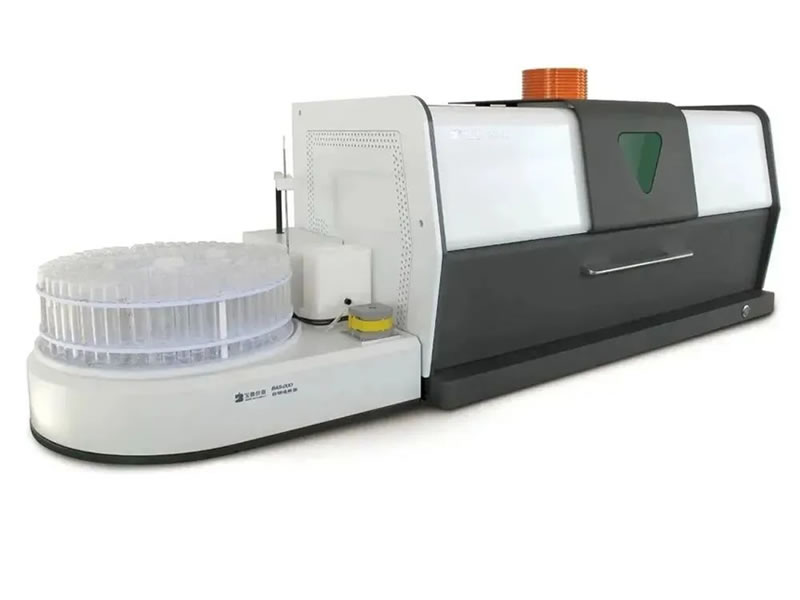
BAF-4000 atomic fluorescence spectrophotometer is developed by Baode. It can simultaneously determine the content of twelve trace elements such as arsenic, mercury, selenium, antimony, bismuth, lead, tellurium, germanium, cadmium, tin, zinc, gold, etc. in food and water samples through four channels.
Testing items :
Mainly used for detecting the content of twelve trace elements such as arsenic, mercury, selenium, antimony, bismuth, lead, tellurium, germanium, cadmium, tin, zinc, gold in samples such as food, agricultural products, tap water, surface water, seawater, traditional Chinese and Western medicine, biomaterials, cosmetics, textiles, metallurgy, and geology. After upgrading, it can detect the forms of elements such as arsenic (As), mercury (Hg), selenium (Se), antimony (Sb), etc.
Instrument characteristics
Ø Four lamp positions - can achieve determination of four elements simultaneous
Ø Small angle optical path (patent) - inclined optical path design, with the advantages of low background and high signal. Compared with traditional optical paths, the sensitivity is increased by about 30%, improving the stability and detection limit; And it has channel enhancement function
Ø Mercury element lamp automatic excitation and buckle drift system (patent) - Mercury lamp automatic excitation, no need for manual excitation and lighting using auxiliary tools; Equipped with a continuous monitoring device for light sources, automatically correcting the drift of mercury lamps, ensuring the long-term stability of the instrument and ensuring the accuracy of measurement results
Ø Element lamp light source without adjustment (patent) - The light source is automatically focused, without the need for manual adjustment of the spot, and without the need for cumbersome light adjustment devices. Ordinary element lamps can plug and play.
Application area :
Mainly used for environmental sample testing, food hygiene testing, water sample testing, agricultural and product testing, geological and metallurgical sample testing, disease control and epidemic prevention center sample testing, Chinese and Western medicine, biomaterials, cosmetics, textile clinical experiments, and educational scientific research.